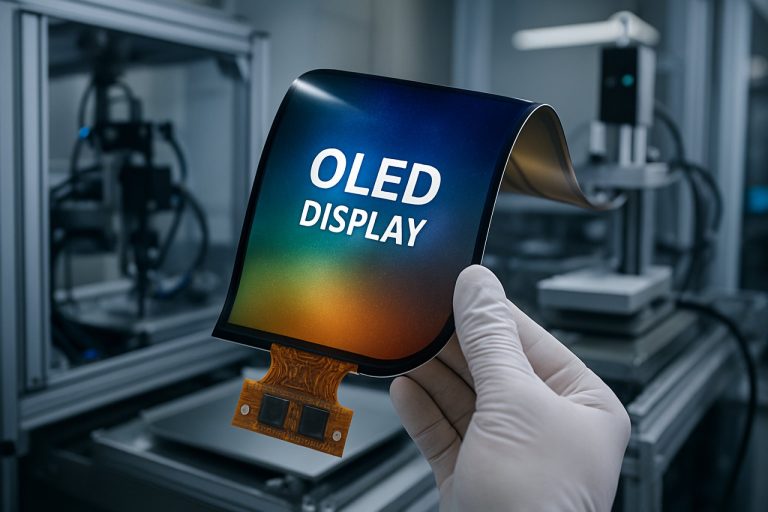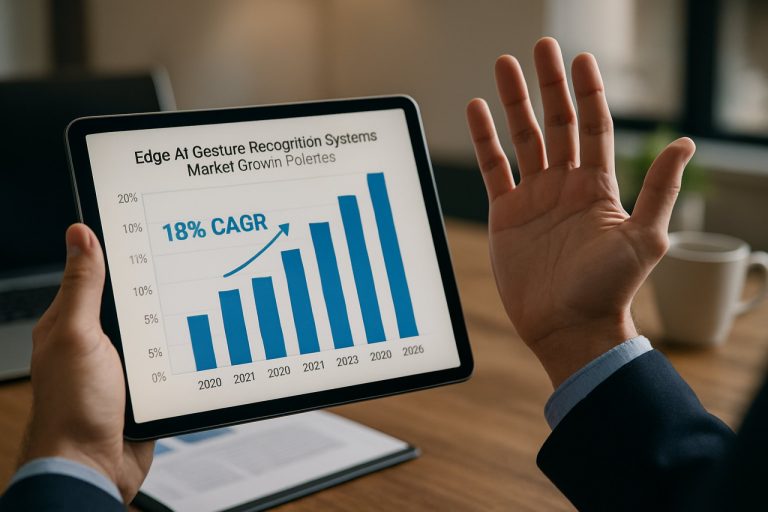
Autonomous Vehicle Data Validation Industry Report 2025: Market Size, Technology Innovations, and Strategic Forecasts. Explore Key Trends, Regional Insights, and Growth Opportunities Shaping the Next Five Years.
- Executive Summary & Market Overview
- Key Technology Trends in Autonomous Vehicle Data Validation
- Competitive Landscape and Leading Players
- Market Growth Forecasts and Revenue Projections (2025–2030)
- Regional Analysis: North America, Europe, Asia-Pacific, and Rest of World
- Future Outlook: Emerging Applications and Investment Hotspots
- Challenges, Risks, and Strategic Opportunities
- Sources & References
Executive Summary & Market Overview
Autonomous Vehicle Data Validation refers to the processes and technologies used to ensure the accuracy, reliability, and safety of data generated and utilized by self-driving vehicles. As the autonomous vehicle (AV) industry accelerates toward commercialization, the validation of sensor, perception, and decision-making data has become a critical market segment. In 2025, the global market for autonomous vehicle data validation is experiencing robust growth, driven by regulatory scrutiny, increasing deployment of advanced driver-assistance systems (ADAS), and the need for large-scale, high-fidelity datasets to train and test AI models.
The market is characterized by a diverse ecosystem of stakeholders, including OEMs, Tier 1 suppliers, technology providers, and specialized validation service companies. Leading automotive manufacturers such as Tesla, Toyota Motor Corporation, and Volkswagen AG are investing heavily in both in-house and third-party validation solutions to accelerate time-to-market while ensuring compliance with evolving safety standards. Technology firms like NVIDIA Corporation and Intel Corporation (via its Mobileye division) are also at the forefront, offering simulation platforms and data annotation tools that support large-scale validation efforts.
According to a 2024 report by Gartner, the global spending on AV data validation solutions is projected to surpass $2.5 billion in 2025, reflecting a compound annual growth rate (CAGR) of over 18% from 2022 to 2025. This growth is fueled by the exponential increase in data generated by AVs—estimated at 1-2 terabytes per hour per vehicle—and the corresponding need for robust validation frameworks to manage, annotate, and verify this data before deployment in real-world scenarios.
Regulatory bodies such as the National Highway Traffic Safety Administration (NHTSA) and the European Commission Directorate-General for Mobility and Transport are intensifying requirements for data transparency and validation, further propelling market demand. Additionally, the rise of simulation-based validation, synthetic data generation, and AI-driven annotation is reshaping the competitive landscape, enabling faster and more cost-effective validation cycles.
In summary, the autonomous vehicle data validation market in 2025 is defined by rapid technological innovation, increasing regulatory oversight, and a growing imperative for safety and reliability. As AV deployment scales globally, data validation will remain a foundational pillar for industry advancement and public trust.
Key Technology Trends in Autonomous Vehicle Data Validation
Autonomous vehicle (AV) data validation is a critical process that ensures the accuracy, reliability, and safety of the data used to train, test, and deploy self-driving systems. As the AV industry advances toward higher levels of automation, the complexity and volume of sensor data—ranging from LiDAR and radar to high-definition cameras—have surged, necessitating robust validation frameworks. In 2025, several key technology trends are shaping the landscape of AV data validation, driven by the need for scalable, efficient, and secure solutions.
- AI-Driven Data Annotation and Validation: The adoption of artificial intelligence (AI) and machine learning (ML) for automating data annotation and validation processes is accelerating. Advanced algorithms can now identify anomalies, label objects, and flag inconsistencies in sensor data with minimal human intervention, significantly reducing time-to-market and operational costs. Companies like NVIDIA and Tesla are leveraging AI-powered validation pipelines to enhance the quality and reliability of their AV datasets.
- Simulation-Based Validation: High-fidelity simulation environments are increasingly used to validate AV data under diverse and rare scenarios that are difficult to capture in real-world testing. Platforms such as ANSYS and dSPACE offer virtual testing solutions that enable rapid iteration and comprehensive scenario coverage, improving the robustness of AV perception and decision-making systems.
- Edge Computing for Real-Time Validation: The integration of edge computing allows for real-time data validation directly on the vehicle, reducing latency and bandwidth requirements. This trend is particularly relevant for safety-critical applications, where immediate feedback is essential. Intel and Qualcomm are at the forefront of deploying edge AI solutions for on-the-fly data validation in AVs.
- Data Privacy and Security Enhancements: As AVs generate and transmit vast amounts of sensitive data, ensuring data privacy and security during validation has become paramount. The implementation of secure data pipelines, encryption, and compliance with regulations such as GDPR and CCPA is now standard practice among leading AV developers, as highlighted by Waymo and BMW Group.
These technology trends are collectively enabling more reliable, scalable, and secure data validation processes, which are essential for the safe and widespread deployment of autonomous vehicles in 2025 and beyond.
Competitive Landscape and Leading Players
The competitive landscape for autonomous vehicle (AV) data validation in 2025 is characterized by a dynamic mix of established automotive technology firms, specialized software providers, and emerging startups. As the complexity and volume of sensor data generated by AVs continue to surge, the demand for robust data validation solutions has intensified, driving innovation and strategic partnerships across the sector.
Leading players in this space include NVIDIA, which leverages its DRIVE platform to offer end-to-end simulation, validation, and verification tools for AV data. Intel, through its subsidiary Mobileye, provides advanced driver-assistance systems (ADAS) and validation frameworks that utilize real-world and synthetic data to ensure safety and reliability. Aptiv and Bosch Mobility are also prominent, offering integrated validation platforms that combine hardware-in-the-loop (HIL) and software-in-the-loop (SIL) testing environments.
Specialized software firms such as dSPACE and Ansys have carved out significant market share by providing simulation and validation tools tailored for AV sensor data, including lidar, radar, and camera systems. These platforms enable large-scale, automated validation processes that are critical for meeting regulatory and safety standards.
Startups like Cognata and understand.ai are gaining traction by offering AI-driven data annotation, validation, and scenario generation services. Their solutions focus on accelerating the validation cycle and improving the accuracy of machine learning models used in AV perception stacks.
- Strategic Partnerships: Collaboration between OEMs, Tier 1 suppliers, and technology firms is a defining trend. For example, NVIDIA partners with automakers and simulation companies to enhance validation workflows.
- Geographic Expansion: North America and Europe remain the largest markets, but significant investments are being made in Asia-Pacific, particularly in China, where local players are emerging rapidly.
- Regulatory Influence: Compliance with evolving safety standards, such as those from the UNECE and NHTSA, is shaping the competitive strategies of leading firms.
Overall, the AV data validation market in 2025 is marked by technological convergence, strategic alliances, and a race to deliver scalable, automated, and regulatory-compliant solutions.
Market Growth Forecasts and Revenue Projections (2025–2030)
The autonomous vehicle data validation market is poised for significant growth in 2025, driven by the rapid advancement and deployment of autonomous driving technologies. As original equipment manufacturers (OEMs) and technology providers accelerate the development of Level 3 and above autonomous vehicles, the demand for robust data validation solutions is intensifying. According to projections by Gartner, the global autonomous vehicle market will see a compound annual growth rate (CAGR) exceeding 20% through 2030, with data validation emerging as a critical enabler for regulatory compliance, safety assurance, and operational reliability.
In 2025, revenue from autonomous vehicle data validation solutions—including simulation platforms, real-world data annotation, and AI-driven validation tools—is expected to surpass $1.2 billion globally. This growth is underpinned by the increasing volume and complexity of sensor data generated by advanced driver-assistance systems (ADAS) and fully autonomous vehicles. IDC estimates that the average autonomous vehicle will generate up to 4 terabytes of data per day by 2025, necessitating scalable and automated validation frameworks to ensure data integrity and model accuracy.
Key market players such as NVIDIA, Intel (via Mobileye), and Aptiv are investing heavily in end-to-end validation ecosystems, integrating cloud-based simulation, synthetic data generation, and real-time analytics. These investments are expected to drive double-digit revenue growth for data validation service providers, particularly in North America, Europe, and East Asia, where regulatory scrutiny and pilot deployments are most active.
Looking ahead, the market is forecasted to maintain a robust CAGR of 18–22% from 2025 to 2030, with total revenues projected to reach $3.5–4 billion by the end of the decade. Growth will be further fueled by evolving safety standards from organizations such as the United Nations Economic Commission for Europe (UNECE) and the increasing adoption of over-the-air (OTA) validation updates. As the industry transitions from pilot programs to commercial-scale autonomous fleets, the need for continuous, automated, and regulatory-compliant data validation will remain a central driver of market expansion.
Regional Analysis: North America, Europe, Asia-Pacific, and Rest of World
The regional landscape for autonomous vehicle data validation in 2025 is shaped by varying regulatory frameworks, technological maturity, and investment levels across North America, Europe, Asia-Pacific, and the Rest of the World. Each region demonstrates unique drivers and challenges influencing the adoption and evolution of data validation solutions for autonomous vehicles.
- North America: The United States and Canada remain at the forefront of autonomous vehicle data validation, propelled by robust R&D investments and a dense ecosystem of technology firms and automotive OEMs. Regulatory initiatives, such as the U.S. Department of Transportation’s AV TEST Initiative, encourage transparent data sharing and validation practices. The presence of leading players like Waymo and Tesla accelerates the demand for advanced validation platforms, with a focus on real-world scenario simulation and edge-case data management. The region’s emphasis on safety and liability further drives the adoption of comprehensive validation protocols.
- Europe: Europe’s approach is characterized by stringent regulatory oversight and cross-border collaboration. The European Union’s General Safety Regulation and UNECE WP.29 standards mandate rigorous validation and reporting for autonomous systems. Countries like Germany, France, and the UK are investing in public-private partnerships to develop shared data validation frameworks. Companies such as Bosch and Continental are at the forefront, leveraging simulation, synthetic data, and real-world testing to meet compliance and safety benchmarks. The region’s focus on interoperability and data privacy shapes the evolution of validation methodologies.
- Asia-Pacific: The Asia-Pacific region, led by China, Japan, and South Korea, is witnessing rapid growth in autonomous vehicle deployment and associated data validation needs. China’s government-backed initiatives, such as the National Intelligent Connected Vehicle Innovation Center, foster the development of indigenous validation platforms. Companies like BAIC Group and Toyota are investing in AI-driven validation tools and large-scale data collection. The region’s competitive landscape is further intensified by the push for smart city integration and 5G-enabled vehicle-to-everything (V2X) communication.
- Rest of World: In regions such as the Middle East, Latin America, and Africa, adoption of autonomous vehicle data validation is nascent but growing. Pilot projects in the UAE and Saudi Arabia, supported by government innovation agendas, are driving initial investments. However, limited infrastructure and regulatory clarity remain key challenges. International collaborations and technology transfers are expected to play a pivotal role in accelerating market maturity in these regions.
Overall, the global market for autonomous vehicle data validation in 2025 is marked by regional disparities in regulatory readiness, technological adoption, and investment intensity, with North America, Europe, and Asia-Pacific leading the way in innovation and implementation.
Future Outlook: Emerging Applications and Investment Hotspots
The future outlook for autonomous vehicle (AV) data validation in 2025 is shaped by rapid advancements in artificial intelligence, sensor technology, and regulatory frameworks. As AVs edge closer to widespread commercial deployment, the need for robust, scalable, and real-time data validation solutions is intensifying. This is driving both technological innovation and significant investment activity across the sector.
Emerging applications in AV data validation are increasingly focused on real-time edge validation, synthetic data generation, and scenario-based testing. Real-time edge validation leverages on-vehicle computing to assess sensor data and AI decisions instantaneously, reducing latency and improving safety. Companies like NVIDIA and Intel are investing heavily in edge AI platforms that enable such capabilities. Meanwhile, synthetic data generation—using simulated environments to create diverse driving scenarios—has become a critical tool for validating AV algorithms at scale. Firms such as Ansys and Cognata are leading in this space, providing platforms that accelerate validation cycles and reduce reliance on costly real-world data collection.
Scenario-based testing is another emerging application, where AVs are validated against a comprehensive library of edge cases and rare events. This approach is gaining traction as regulators, including the National Highway Traffic Safety Administration (NHTSA), push for more rigorous safety assessments before AVs can be deployed on public roads.
Investment hotspots in 2025 are concentrated in North America, Europe, and parts of Asia-Pacific, particularly China and Japan. According to IDC, global spending on AV validation and simulation tools is projected to grow at a double-digit CAGR through 2028, with venture capital and strategic investments flowing into startups specializing in AI-driven validation, cloud-based simulation, and cybersecurity for AV data pipelines. Major automakers and technology firms are also forming partnerships and consortia to pool resources and standardize validation protocols, as seen with the 5G Automotive Association and the European Council for Automotive R&D (EUCAR).
In summary, 2025 will see AV data validation evolve from a bottleneck to a competitive differentiator, with emerging applications and investment hotspots reflecting the sector’s maturation and the growing imperative for safe, reliable autonomous mobility.
Challenges, Risks, and Strategic Opportunities
Autonomous vehicle (AV) data validation is a critical process that ensures the safety, reliability, and regulatory compliance of self-driving systems. As the AV industry accelerates toward commercialization in 2025, the sector faces a complex landscape of challenges and risks, but also significant strategic opportunities.
One of the foremost challenges is the sheer volume and diversity of data generated by AV sensors, including LiDAR, radar, cameras, and ultrasonic devices. Validating this data for accuracy and consistency across millions of real-world and simulated scenarios is a monumental task. The need for high-quality, labeled datasets is further complicated by edge cases—rare or unexpected events that AVs must handle safely. According to McKinsey & Company, the lack of standardized validation frameworks and the complexity of integrating data from multiple sources remain persistent hurdles.
Risks in AV data validation are multifaceted. Inadequate validation can lead to system failures, safety incidents, and regulatory setbacks, undermining public trust and delaying market adoption. Data privacy and cybersecurity are also significant concerns, as AVs collect vast amounts of sensitive information. Regulatory bodies such as the National Highway Traffic Safety Administration (NHTSA) are increasingly scrutinizing validation protocols, and non-compliance can result in costly recalls or legal liabilities.
Despite these challenges, strategic opportunities abound. The growing demand for robust validation solutions is driving innovation in AI-powered data annotation, simulation platforms, and digital twin technologies. Companies like NVIDIA and Ansys are investing heavily in simulation environments that can replicate complex driving scenarios at scale, reducing the need for costly real-world testing. Partnerships between automakers, technology firms, and regulatory agencies are fostering the development of industry-wide standards, which could streamline validation processes and accelerate deployment.
- Challenge: Managing and validating massive, heterogeneous datasets.
- Risk: Safety incidents and regulatory penalties due to insufficient validation.
- Opportunity: AI-driven simulation and annotation tools to enhance validation efficiency.
- Opportunity: Collaboration on standards to reduce fragmentation and improve scalability.
In 2025, the ability to navigate these challenges and capitalize on emerging opportunities will be a key differentiator for AV developers and solution providers, shaping the trajectory of autonomous mobility.
Sources & References
- Toyota Motor Corporation
- Volkswagen AG
- NVIDIA Corporation
- European Commission Directorate-General for Mobility and Transport
- dSPACE
- Qualcomm
- Mobileye
- Aptiv
- Bosch Mobility
- understand.ai
- IDC
- Bosch
- BAIC Group
- 5G Automotive Association
- European Council for Automotive R&D (EUCAR)
- McKinsey & Company



